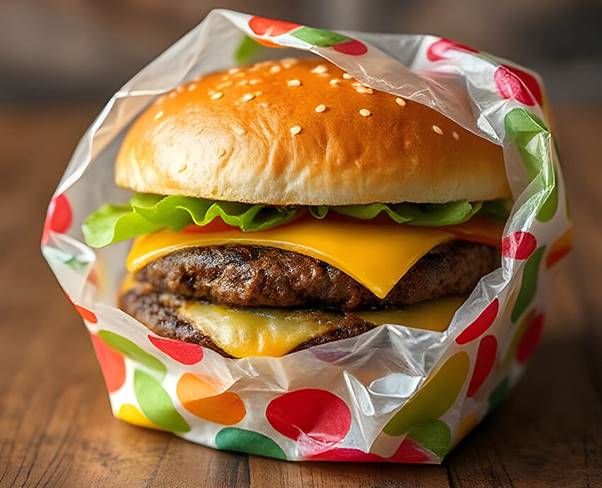Lifelong poisons – the new risk of food packaging
A plastic take-out box, a hamburger wrapper, fire-fighting foam or a raincoat: what they all have in common is that they may contain the infamous “everlasting substances”. PFAS compounds break down so slowly that they practically stay with us forever, accumulating in our bodies and in surface waters. What could be the solution? The latest compilation by Körkörös.hu reveals.
 The problems caused by microplastics today are already known to many, but in addition to tiny plastics and other harmful substances (BPA, phthalates, a group of compounds called PFAS can also enter our bodies from the plastic boxes and paper packaging used to order food. Per- and polyfluoroalkyl substances are often referred to in English as “forever chemicals” – and not by chance.
The problems caused by microplastics today are already known to many, but in addition to tiny plastics and other harmful substances (BPA, phthalates, a group of compounds called PFAS can also enter our bodies from the plastic boxes and paper packaging used to order food. Per- and polyfluoroalkyl substances are often referred to in English as “forever chemicals” – and not by chance.
In Hungary, such materials have been detected in the Tisza River and other domestic waters, which cause problems precisely because they do not decompose, but persist for decades and become integrated into living systems. Another article points out: these substances can also enter the drinking water network from rivers.
Why are PFAS so widespread? Why are they dangerous?
PFAS are the “Swiss Army knives” of modern industry: they are heat-resistant, and also have water, grease and dirt-repellent properties, which is why we can find them in everything from the coating of Teflon pans to shoes and raincoats to fire-fighting foams or cosmetics, not to mention food packaging. This versatile group of compounds is used to coat plastic boxes and paper used for transporting, storing and packaging food so that the packaging does not soak through, grease does not stick to it, and food does not leak out.
Since these compounds degrade very slowly, they enter the environment, into freshwater, and there, for example, they can disrupt the hormone balance of daphnia, which upsets the entire ecosystem. In humans, research has linked them to hormonal disorders, thyroid diseases, reduced immune response, certain types of tumors and reduced fertility. In fact, other research has shown that some PFAS can be detected in human blood and even breast milk, suggesting that daily exposure has a cumulative effect.
Why are they still on the market?
It is a fair question: if they are so dangerous, why do we still see these substances on store shelves? The answer is complex. The EU has actually banned several “old” PFAS, such as PFOS or PFOA. These were withdrawn from circulation around 2020. Manufacturers were given a grace period to switch to other substances – but this period could be as long as five years. In the meantime, the industry developed newer PFAS compounds (e.g. GenX) that were later found to be potentially dangerous as well.
Related news
Too many gifts, too much food: our holiday excesses are putting a serious strain on the environment
🎧 Hallgasd a cikket: Lejátszás Szünet Folytatás Leállítás Nyelv: Auto…
Read more >Lidl Austria Expands Electric Supply Fleet
🎧 Hallgasd a cikket: Lejátszás Szünet Folytatás Leállítás Nyelv: Auto…
Read more >Henkel: 3,000 accident-free days
🎧 Hallgasd a cikket: Lejátszás Szünet Folytatás Leállítás Nyelv: Auto…
Read more >Related news
The New Year’s Eve fireworks fair is back: temporary sales will start in department store parking lots at the end of December
🎧 Hallgasd a cikket: Lejátszás Szünet Folytatás Leállítás Nyelv: Auto…
Read more >The first Eastern European non-alcoholic beer turns 50
🎧 Hallgasd a cikket: Lejátszás Szünet Folytatás Leállítás Nyelv: Auto…
Read more >Sausage: pork prices are already going down, but they won’t be cheaper in stores – a significant correction may come in the spring at the earliest
🎧 Hallgasd a cikket: Lejátszás Szünet Folytatás Leállítás Nyelv: Auto…
Read more >






